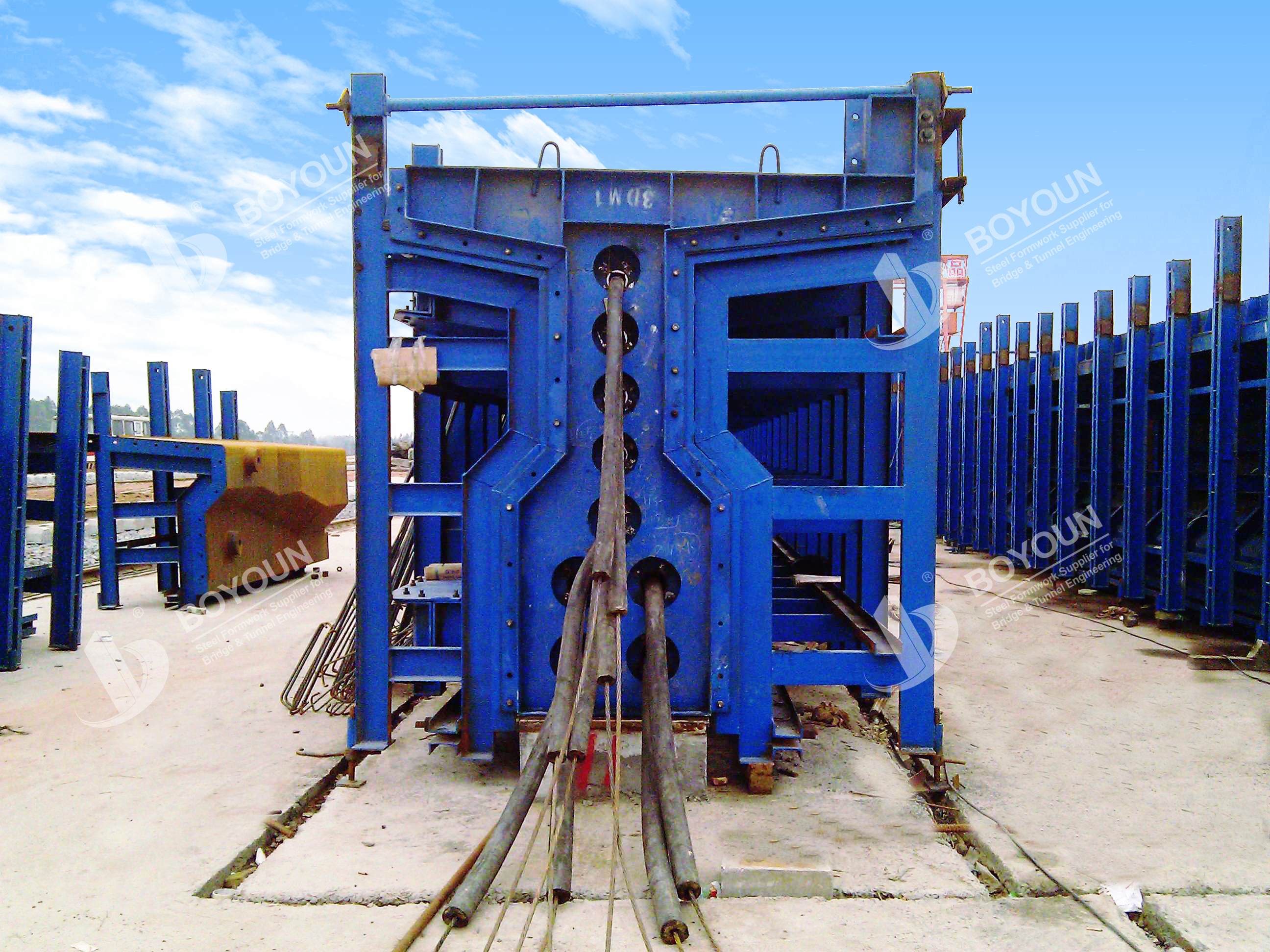T-beam intelligent tensioning can help bridge construction be more efficient. This article summarizes the current quality issues in T-beam intelligent tensioning. It also summarizes the overall quality control measures, with the aim of helping to continuously improve the T-beam intelligent tensioning process.
The quality issues that occur during T-beam intelligent tensioning are mainly related to prestressing. For instance, if the prestressed T beam is too small, it indicates that the prestressing force is insufficient, which is manifested in reality as cracks in the bridge structure and excessive deflection. On the contrary, if the prestressed T beam is too large, the safety reserve of the prestressed tendons will be insufficient. In any case, the above two problems will bring hidden dangers to the quality of the bridge structure and may lead to a certain brittle failure. Furthermore, if the material selection is incorrect and quality problems occur, it will also be manifested in the winding of the duct position.

As intelligent tensioning is a new technology, there will be challenges with controlling construction technology. Therefore, control work must be done early on to ensure that the tensioning force meets construction requirements. In specific operations, it is crucial to understand the inspection process and enhance the overall construction quality by controlling equipment, construction personnel, prestressed materials, and other components. Furthermore, due to the varying prestressing tensioning methods for different situations, the quality control methods will be different as well. Hence, it 's crucial to specifically define each operation process, specification standards, and control measures.
During tension, it is not executed blindly, but a specific sequence must be followed, otherwise there will be insufficient force, distortion, lateral bending, and other situations. For the two transverse bundles of the side-by-side T-beam, the first bundle should be controlled to only need to tension 50% of the stress, while the second bundle needs to reach 100% of the stress. At this time, the remaining 50% of the stress of the first bundle is not complete, so that it reaches 100%. This can maintain the balance of force and the order of the design, and also minimize the number of movements under the premise of quality assurance to achieve a consistent and uniform technical concept.
Ensuring the safety of construction has always been a prerequisite for the smooth implementation and completion of various projects. Therefore, in the specific construction process, while meeting specific requirements for the control structure and process type, isolation belts should also be established. In addition, the staff also needs to control the application system, and dispatch staff to conduct safety supervision on the construction site at any time to ensure the reasonable control of the tensioning sequence, ensure the stability and firmness of the jack bracket, and avoid other unnecessary troubles due to uneven force. Furthermore, the control structure should also be analyzed to prevent problems in the project due to anchor cracking or prestressed breaking.
T-beam intelligent tensioning, as a new technology and new process in bridge construction, has improved the work efficiency of bridge construction, but also has quality problems, mainly manifested in slipping wires, cracking under anchors, loss of control of tensioning time, and poor quality of tensioning strength. It is necessary to ensure the quality from the aspects of controlling construction difficulties, determining the tensioning sequence, and ensuring the safety of tensioning, and continuously improve safety and stability of bridge construction.

International Department: Room 2211-2212, Tower C of Wanda Plaza, Tongzhou District, Beijing 101118, China.
+86-13021287080
info@boyoun.cn